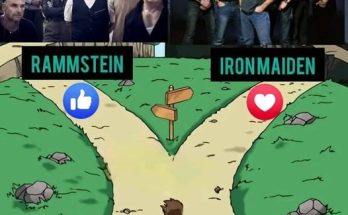Chicago Bears Eye Late Trade Move to Strengthen NFC North Push.
The idea that the Chicago Bears could pursue a last‑minute trade to strengthen their NFC North push has moved from message‑board chatter into a discussion worth taking seriously because the division race is tight, imperfect, and begging to be tipped by a marginal upgrade. When nobody is running away with the North, the team that patches one leak, steals one possession, or adds one matchup piece before the deadline can change the math of January football. General manager Ryan Poles has shown a willingness to act boldly when the roster demands it, but also a discipline about price and fit. That balance—urgency without recklessness—will define whether the Bears merely listen or actually pull the trigger as the clock winds down.
“Last‑minute” in NFL trade terms is not just a calendar note; it is a logistical squeeze. Negotiation windows shrink. Medical information must be exchanged and cleared in hours, not days. Contracts need to be re‑worked or re‑filed fast enough to meet league office cutoffs. And of course the player you covet has to be available at a cost that makes sense for both clubs. Yet deadlines clarify truth. Nagging injuries either heal or don’t; depth players either hold up to starter workloads or reveal limitations; teams drifting out of contention begin fielding calls to flip veterans for future draft assets; cap‑tight contenders with positional surplus reluctantly take offers. What felt hypothetical in September can become actionable in late October simply because circumstances harden.
Start with where the Bears can most efficiently buy improvement. Edge rush help sits at the top of nearly every contender’s wish list for a reason: pressure travels in cold weather, pressure shortens drives, pressure tilts turnover margin. Young pass rushers often flash without sustaining; they win one week with raw athleticism and disappear the next against a veteran tackle who sits on their fastball. A rotational veteran who understands hand placement, counters, and contain discipline can stabilize the four‑man rush package, allowing the coordinator to keep coverage shells intact instead of sending extra bodies. Even a small uptick in hurry rate on third‑and‑medium can flip drive outcomes across November’s grind.
The interior offensive line is the second stress point to examine. NFC North fronts are built to squeeze the pocket from the inside out, muddying the quarterback’s platform and shrinking throwing lanes. When interior leakage shows up, it does more than give up sacks; it disrupts timing on quick game, collapses run fits, and forces longer down‑and‑distance sequences that invite exotic blitz looks. If the Bears are cycling through dings or inconsistency at guard or center, a plug‑and‑play veteran with multi‑position flexibility becomes insurance that pays off immediately. One steady interior presence can preserve the playbook—screens, play‑action, and intermediate timing routes all depend on trustworthy protection in the A‑ and B‑gaps.
Wide receiver depth—specifically a reliable chain‑mover to complement the vertical element—deserves real exploration. Defenses that squat on intermediate windows and dare Chicago to win one‑on‑one outside the numbers have produced choppy third downs at times. A midseason addition who beats press with craft, size, or short‑area quickness could expand the quarterback’s answers on money downs and in condensed red‑zone spaces. Crucially, the Bears would not be shopping for a volume‑hungry alpha; they would be seeking role fit: someone who understands leverage, finds soft spots against zone rotation, and converts contested third‑and‑5s that keep scoring drives alive.
Secondary attrition is the quiet threat that stalks every contender down the stretch. Nickel corners and hybrid safeties who tackle in space become premium currency once temperatures fall and screen‑and‑sweep packages function as extended handoffs. If medical reports raise real durability concerns in the Bears’ defensive backfield, flipping a late conditional pick for a proven sub‑package defender might save more points than any headline acquisition. The hidden‑yardage plays—two‑yard stops that force punts, open‑field tackles that keep explosives from happening—stack over a month of football and change field position math.
All of these roster ideas must clear two filters: the salary cap and the draft‑asset ledger. Poles inherited a roster that required patient rebuilding and has guarded premium picks accordingly. That does not preclude movement; it simply narrows the shopping aisle. Rentals on expiring deals tend to come cheaper but vanish in March unless extended. Younger players with additional years of control cost more up front yet deliver multi‑season value and flexibility in planning future drafts. The central question becomes: How credible is Chicago’s contention window this season, and how much future flexibility are you willing to deploy to chase it? The answer will steer whether the Bears pursue a low‑cost depth rental, a controlled‑cost upside swing, or sit out.
History around Halas Hall offers perspective. The pre‑season blockbuster for Khalil Mack years ago proved how an elite talent can redefine a defense overnight—but it also showed the steep draft and cap toll that comes with swinging for the fences. More recently, the midseason move for Montez Sweat demonstrated a calibrated template: target a premium position of need, pay a strong but defensible package, secure the extension quickly, and fold the player into a long‑term plan rather than a pure rental. Any new move would almost certainly aim for that middle lane: meaningful upgrade, rational cost, contractual clarity.
Locker room messaging is an under‑discussed dividend of deadline action. Players pay attention when the front office reinforces a thin room; it signals belief, rewards effort, and can jolt energy through practice fields the very next day. Conversely, standing pat can communicate confidence in the roster you have built—positive if the room feels resilient, risky if guys feel they are holding the dam with duct tape. Culture is fragile. Bringing in the right personality, not just the right skill set, matters in a locker room that has spent months developing trust.
Scheduling context sharpens urgency. If the Bears are staring at a decisive divisional stretch—say two of the next three against NFC North rivals or a block of outdoor, cold‑weather games where trench play dominates—the marginal utility of an addition rises. Deadline trades are not abstract portfolio plays; they are matchup solutions. Is there a power interior front looming that will test depth? A physical X receiver on the upcoming slate who has historically bullied smaller corners? A coverage scheme you want to deploy but cannot because of one weak link? Mapping roster needs to specific near‑term opponents is how last‑minute trades create immediate wins.
Analytics departments help quantify those choices. Upgrade a roster spot from replacement level to league average and win‑probability models can translate that change into expected points added, win expectancy swings across the remaining schedule, and ultimately playoff odds. A two‑ or three‑percentage‑point bump may sound modest, but in a jammed division race it can justify parting with a mid‑round pick—especially if compensation escalates only when the player hits snap thresholds or the team reaches postseason benchmarks. Conditional structuring is a front office friend at the deadline.
Risk never leaves the room. A newcomer must digest terminology at warp speed; one blown protection, one misread coverage check in a pivotal game, and all the theoretical upside evaporates. Draft picks spent are four cheap contract years you no longer control. Cap dollars absorbed now may crowd out extensions for your own ascending core. Smart front offices write those tradeoffs in ink before they say yes.
So what might an ideal Bears deadline deal look like? Imagine a non‑contender offering a veteran interior lineman who has started at both guard spots, carries a manageable base salary, and has no guarantees beyond this season. Chicago sends a conditional late pick tied to snaps or playoff advancement. The vet rotates in his first week, stabilizes communication calls, and by the second game helps keep the pocket firmer on must‑throw downs. It is not a fireworks move, yet it could unlock the full passing menu and protect the quarterback when it matters most.
Alternatively, picture prying loose an underutilized edge rusher buried on a deeper depth chart. Because he has another year of rookie‑scale control, the price rises to a mid‑rounder plus a late swap. The Bears’ staff sees first‑step juice that complements an existing power rusher, finally enabling twist games and simulated pressures they have schemed but rarely deployed. Sack totals need not skyrocket; a steady rise in pressure rate that shortens opponent drives can tilt field position and turnover margin in December.
Fans naturally hunger for splash names, but deadline victories are often quieter and more surgical. The right depth piece who prevents a catastrophic drop‑off when late‑season injuries strike can be more valuable than a marquee headline that never quite fits. Chicago has been building toward sustainable competitiveness; the challenge is threading the needle so that a present‑tense boost does not starve the future.
If the deadline passes without a deal, it should not automatically be read as timidity. Sometimes the sharpest move is declining an ask that overshoots value. It can also reflect genuine faith that developmental snaps for young players will yield a stronger, cheaper core next season. Bears fans should evaluate inaction through that dual lens: the adrenaline of immediate action versus the discipline of long‑arc construction.
Still, the intrigue surrounding a late move designed to tilt a crowded division is hard to ignore. Whether the final hours produce trench fortification, situational pass‑rush juice, coverage versatility, or chain‑moving reliability in the passing game, Chicago has plausible pathways to justify picking up the phone as the buzzer nears. Price the upgrade correctly, protect future flexibility, and send a clear message about where this franchise believes it stands. In a year when inches separate hope from heartbreak, the right last‑minute trade could be the nudge that keeps meaningful football alive into January—and perhaps the spark that helps the Bears step out of the NFC North pack. Whatever happens, the answer will show up not only in the transaction log but in the tone of the locker room the very next practice.



